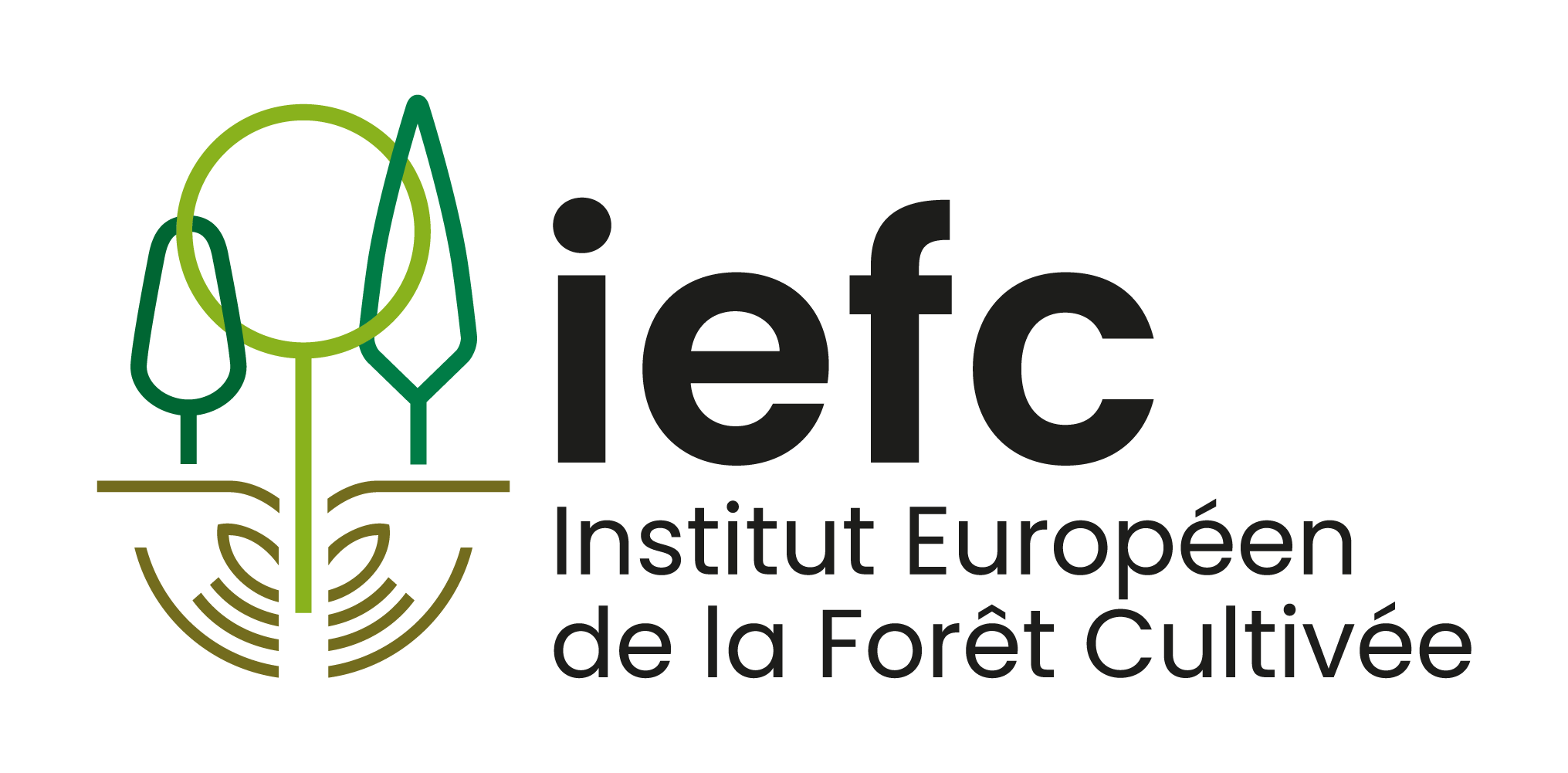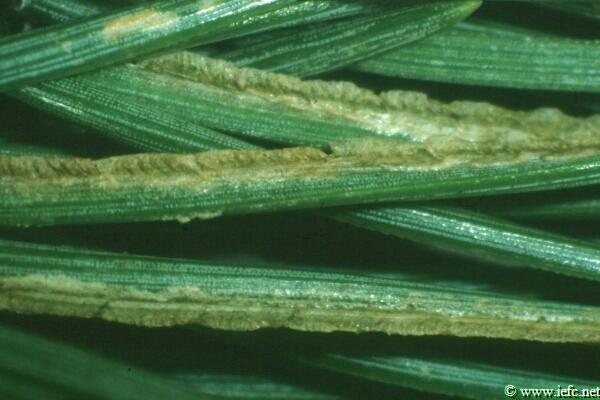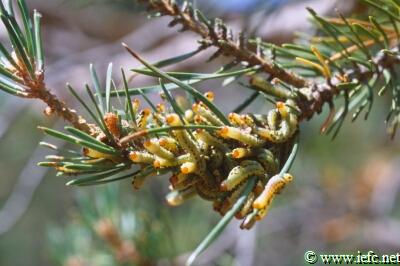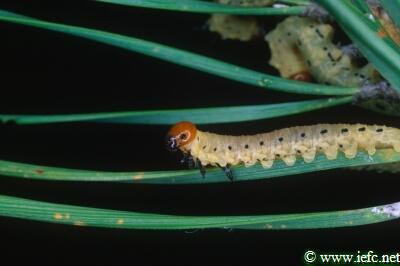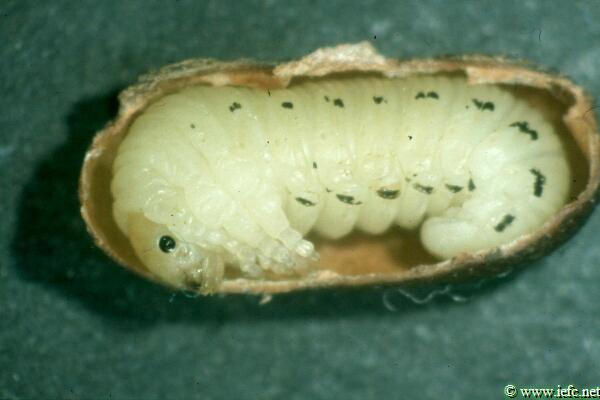Large pine sawfly
Diprion pini (L) (Hymenoptera, Diprionidae)
Host tree
Several pine species, particularly Scots pine (Pinus sylvestris).
Identification
- In spring and early summer, inner side of needles covered with a brown, longitudinal coating, protecting the eggs (Photo 1).
- From late spring to autumn, colonies of caterpillar-like larvae feeding gregariously on needles, without any silky nest. Larvae are light yellow to yellow-green, up to 25 mm long, with two side rows of black spots and a reddish head (Photo 2 and 3).
- Presence of compact, ovoid, brown cocoons on the tree crown in summer or in the bark cracks at the basis of the trunk or buried in the soil or leaf litter from summer to next spring (Photo 4).
Damage
- Severe defoliation strongly reduces annual growth.
- Defoliation and twig feeding causes tree weakening and increases susceptibility to attacks by stem borers.
- Total defoliation in stressed trees may cause tree death.
Biology
- In most regions there are two generations per year, but in mountain areas and northern Europe only one generation per year occurs.
- Adults fly in mid spring and in mid to late summer (two generations) or from late spring to mid summer (one generation).
- Rows of eggs are laid in slits cut by the females in the inner side of needles, covered by a coating that turns brown when hardened.
- Larvae live communally, feeding on the old needles (spring to summer) and on the bark of twigs; second generation larvae feed also on the current year needles.
- First generation larvae pupate in cocoons on needles and branches (mid summer), those of the second generation enter the soil in autumn to spin overwintering cocoons; in case of one generation, overwintering cocoons are produced in mid to late summer.
- The overwintering stage (transformed mature larvae named eonymphs, previous to pupae) stops its development for several months (normal diapause) to up to three years (prolonged diapause).
- Outbreaks do not last locally for more than two years; natural enemies, starvation and prolonged diapause are the main factors regulating populations.
Risk factors
- Continuous, pole-stage, pure Scots pine stands (natural and reforested) are more prone to attack.
Distribution
- <i>Diprion pini</i> is present in Europe wherever Scots pine is present. It occurs throughout Europe from Scandinavia to the Mediterranean Region, where it attacks other pine species. Outbreaks are more frequent in Northern Europe, but can also occur in other regions.
Pest management
Monitoring
- Use of pheromone traps to assess flight period and detect population build-up.
Preventive measurements
- Avoid wide, continuous, pure Scots pine stands, by plantation of mixed pine-hardwood stands.
Curative control
- Insecticide applications, where allowed, should follow national legislations. In general, they are not recommended because natural enemies and starvation will normally lead to a rapid population collapse.
Climate change
- The future effects of climate are difficult to predict with this species because climatic requirements are not fully understood. Overwintering cocoons are protected by snow in cold areas and, thus, not very sensitive to cold winters. Nevertheless, young larvae are sensitive to late frost. Therefore rising temperatures may be beneficial for the sawfly and the northern limit of outbreaks will most probably move northwards.
- Temperature increase may lead to an additional generation in northern or mountain populations.
